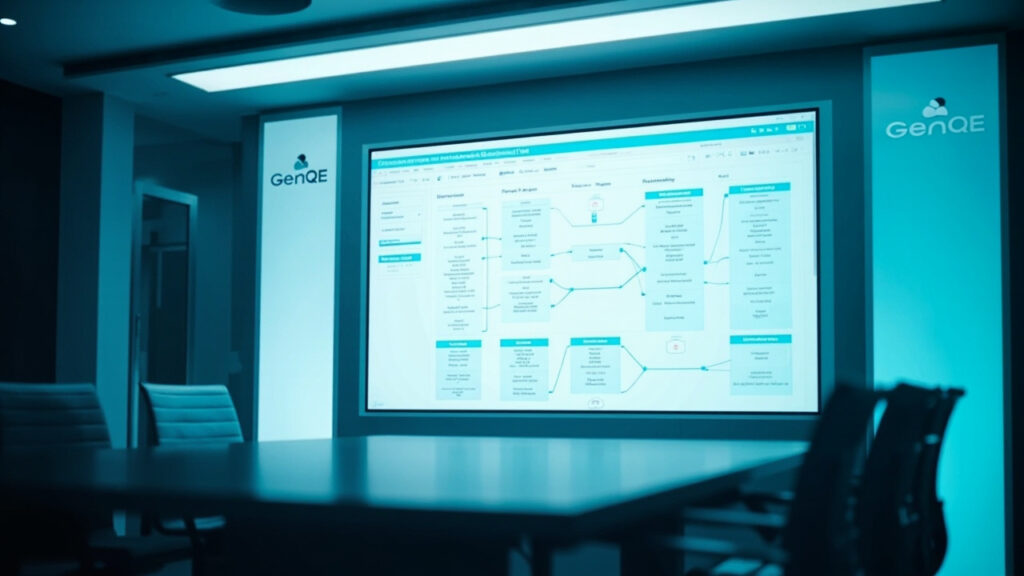In the evolving world of software development, the integrity and reliability of applications are paramount. As software becomes more integrated into every facet of our lives, the stakes for ensuring its quality are at an all-time high. Traditional testing methodologies, although effective, struggle to keep pace with the complexities and rapid delivery demands of modern software projects. This blog post delves into the different levels of software testing, outlining their importance, challenges, and how innovative solutions like GenQE are revolutionizing the testing landscape.
Software testing is not just a phase in the development cycle; it’s a crucial process that ensures applications perform as expected and are free from defects that could lead to failure or security breaches. However, understanding the various levels of software testing can be overwhelming. From unit testing to acceptance testing, each level plays a strategic role in a comprehensive quality assurance strategy.
By the end of this article, you will gain a profound understanding of each testing level, discover how to integrate advanced tools like GenQE to optimize your testing processes, and learn why a multi-level testing strategy is essential for developing high-quality software in today’s digital age.
The Foundation: Unit Testing

Unit testing forms the base of the software testing pyramid. It involves testing individual components or units of a software application to ensure each part functions correctly in isolation.
Importance of Unit Testing
Unit testing is crucial because it catches bugs at an early stage, significantly reducing the cost and time of fixing defects later in the development cycle. By validating each piece of the code, developers can make changes without the fear of unknowingly affecting other parts of the application.
Challenges in Unit Testing
Despite its benefits, unit testing can be time-consuming and often requires a high level of maintenance, especially when application requirements change frequently. Additionally, writing effective tests that cover edge cases and error conditions can be challenging.
GenQE’s Role in Enhancing Unit Testing
GenQE, with its AI-driven test generation, automates the creation of unit tests, significantly reducing the manual effort involved. It analyzes the software requirements and existing code base to generate relevant and comprehensive test cases, ensuring high coverage and robustness of the unit tests.
Integrating Components: Integration Testing

Integration testing is the next level up in the testing hierarchy. It focuses on verifying the interfaces and interaction between modules or components of the application.
Understanding Integration Testing
The primary goal of integration testing is to identify issues in the interaction between integrated units. This testing level is crucial for catching problems that unit tests might miss, such as data format errors, interface mismatch, and integration logic errors.
The Complexity of Integration Testing
Integration testing can become complex as the number of components increases. Ensuring the test environment mimics the production environment closely enough to yield accurate results is also a significant challenge.
How GenQE Facilitates Integration Testing
GenQE’s smart test execution feature comes into play here, intelligently prioritizing test cases based on risk analysis and dependencies between components. This not only optimizes the testing efforts but also reduces the time to detect and fix integration issues.
Ensuring User Satisfaction: System Testing

System testing is a higher level of testing where the complete and integrated software system is tested to evaluate its compliance with specified requirements.
Role of System Testing
System testing is critical as it validates the end-to-end functioning of the software and ensures that the integrated components work together as expected in a simulated production environment. This level of testing checks not just the code, but also the user experience, software, and system compliance with business requirements.
Challenges Faced During System Testing
One of the primary challenges in system testing is the creation and maintenance of a test environment that accurately reflects the production setting. Additionally, system testing must cover various aspects such as performance, security, and usability, which requires extensive resources and coordination.
GenQE’s Impact on System Testing
With GenQE’s comprehensive test coverage and AI-powered defect detection, system testing becomes more manageable and effective. The platform ensures that tests are thorough and focus on potential areas of failure, improving the quality and reliability of the software.
Verifying Acceptance: Acceptance Testing

Acceptance testing, often the final level of testing conducted before the software is released, is crucial for assessing whether the software meets the business needs and obtaining client or stakeholder approval.
Significance of Acceptance Testing
Acceptance testing is essential for verifying that the software solution aligns with business requirements and is ready for deployment. It acts as a final verification to ensure that any contractual or regulatory requirements are met and that the user experience is satisfactory.
Challenges in Acceptance Testing
The major challenge in acceptance testing is ensuring that real-world scenarios and workflows are accurately replicated. There’s also the challenge of involving stakeholders who are not regularly part of the development process and might have different expectations.
Streamlining Acceptance Testing with GenQE
GenQE aids in acceptance testing by providing tools for automating and simulating real-world user behavior in testing scenarios. This not only speeds up the process but also enhances the accuracy of tests, ensuring that the software meets all user expectations and compliance requirements.
Conclusion: Elevating Software Testing to New Heights

Understanding the different levels of software testing is crucial for any software development project aiming for high quality and reliability. Each level addresses specific aspects of software quality, and together, they ensure a robust and user-friendly product.
Innovations like GenQE are transforming the landscape of software testing. By integrating such AI-powered tools, organizations can enhance their testing strategies, reduce time to market, and deliver superior products efficiently. As we continue to face more complex software solutions, embracing advanced testing tools is not just an option—it’s a necessity.
Explore how tools like GenQE can revolutionize your testing processes and help you achieve unparalleled software quality. The future of software testing is here—embrace it to stay competitive and reliable in the ever-evolving digital marketplace.
Discover More Innovative Solutions
Want to learn more about the tools and technologies discussed in this article? Explore how these innovations can be tailored to your specific needs and workflow requirements.
Our team of experts is available to answer your questions and provide personalized insights into how modern solutions like GenQE can address your specific challenges.